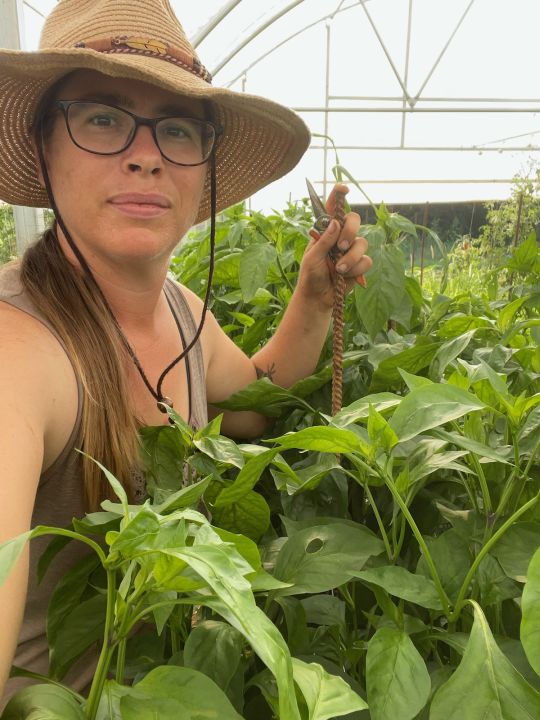Ready to get nerdy with me? Let’s talk about vegetative vs. generative growth. Far from abstract, these principals are playing out in the garden right now and impacting our harvests.
During vegetative growth, plants grow big and bushy. They are busily conducting photosynthesis, growing leaves, and accumulating resources for flowering and fruiting. Plenty of nitrogen, enough water, and gradual changes in temperature are conditions that favor vegetative growth. Vegetative growth is good in roots and greens because it’s those vegetative parts that you eat! But it is good in fruiting plants, too. You want a big strong plant that can support a lot of fruit.
Can you have too much vegetative growth? Right now in the high tunnel we are growing the biggest pepper plants I’ve ever had on the farm. They just keep getting taller and taller. When will they start to flower? When will they make fruit? It’s like they are stuck in vegetative growth. And I think I know why. It got so hot so early this year, we’ve had shade on all the structures since the beginning of June. I’ve never grown peppers under shade cloth before. Apparently lower light intensity also promotes vegetative growth.

Generative growth is marked by flowering and fruiting. The conditions that favor generative growth are intense light, big temperature swings, drier soil, and less nitrogen. In short, stress in all it’s forms encourages plants to make seeds. It’s bad news when plants shift to generative growth too soon. That’s when greens and roots bolt. But even so for flowering and fruiting vegetables. Overall fruit production will be lower if the plant hasn’t grown big and strong enough first, even if it starts fruiting sooner.
The okra is suffering from too much generative growth too early. Usually we get big bushy plants before they start growing okra pods. This year they started flowering when they were very small. The plants are still just waist high. We went through and cut all the old pods off the plants. I am making sure the soil stays moist. Will the plants ever catch up? Or am I stuck with weak and spindly okra plants?
Stress favors generative growth, and one cause of stress is transplanting. Last year we had terrible germination in the direct seeded okra, so I chose to start it in the greenhouse and transplant it this year. I’m afraid I may have doomed the okra when I made that decision.
Obviously, farmers make lots of decisions that may unintentionally push a crop one way or the other. And sometimes learning can be a painful process. But one of the things I love about farming is that there is always more to learn.
Full Shares
Slicing tomatoes
Juliet tomatoes
Cherry tomatoes
Summer squash
Sweet peppers
Eggplant, or okra, or honeynut winter squash
Small shares
Slicing tomatoes
Juliet tomatoes
Cherry tomatoes
Summer squash
Sweet peppers
Potatoes




You must be logged in to post a comment.